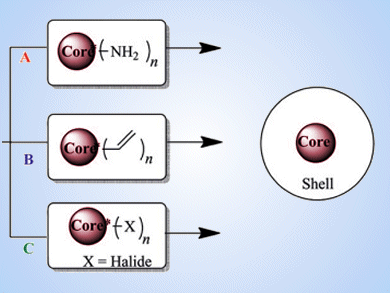Due to the highly branched globular structure of dendrimers, they are attractive scaffolds for a wide variety of high-end applications, such as liquid crystals, solar cells, sensors, gene-transfection agents, drug-delivery systems, coating agents, and additives in commodity plastics.
Peter Eilbracht and co-workers, Technische Universität Dortmund, Germany, have reported a convergent synthesis of polynitrile and/or polyamine dendrimers: Individual dendrons were formed by repetitive coupling reactions (Michael-type additions). These were then attached to different polyfunctionalized cores (e.g., polyamine, polyhalide, or polyolefin cores) to provide the desired globular architecture. This final step was achieved by hydroaminomethylation, a tandem hydroformylation/reductive amination sequence.
This approach allows greater flexibility in the functionality of the dendrons and should allow synthesis of higher generation dendrimers than previous methods.

Images: (c) Wiley-VCH
- Convergent Synthesis of Polynitrile and/or Polyamine Dendrimers through Hydroaminomethylation and Michael Addition
M. Beigi, S. Ricken, K. S. Müller, F. Koç, P. Eilbracht,
Eur. J. Org. Chem. 2011.
DOI: 10.1002/ejoc.201001307




